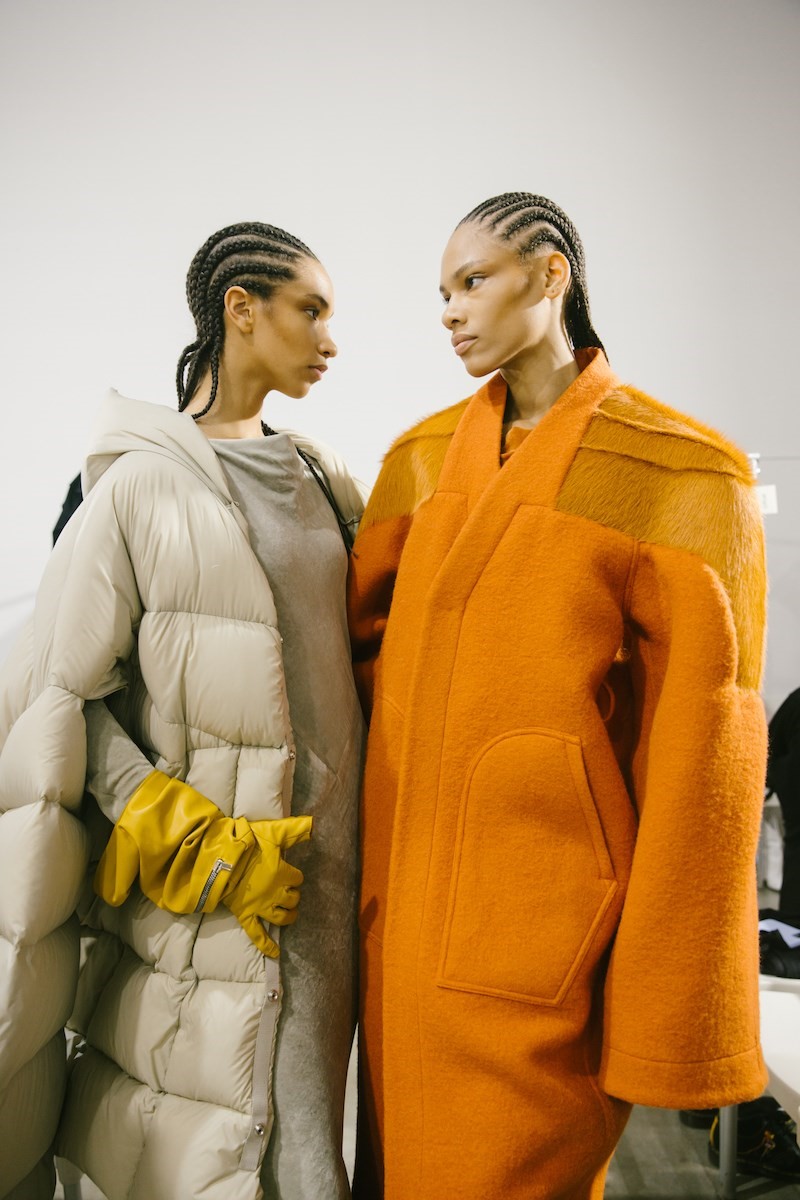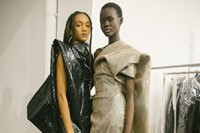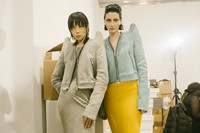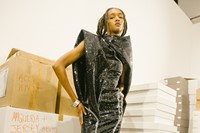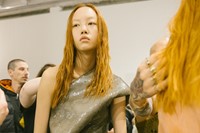Rick Owens writes show-notes that are the envy, I think, of every journalist working in fashion, for their ability to elucidate what he is thinking of in his clothes, and also how they reflect the times. When I read them this time around, I was struck by their ability to communicate his complex intention in equally complex times, his justification for continuing with creation, why fashion should carry on. Here’s what he said:
“Fashion has always been about communication, and signalling value systems to others. Value systems regarding physical beauty and status but also about moral beauty and beautiful behaviour. In times of menace and strife, the way we present ourselves can express what we endorse and aspire to - an empathetic and gracious way of moving through the world and treating others.”
This doesn’t feel so much like Rick Owens talking about Autumn/Winter 2022 – although, of course, he is – but Rick Owens talking about the here and now. He is one of those designers rarely attuned to our moment, whose work therefore speaks far wider than fashion. It’s about more than just clothes – although they are the medium through which he chooses to express himself. Lucky for all of us involved in it. In his menswear collection, presented in January, there was a sweater printed with the words “Subhuman, inhuman, superhuman” – words which the designer characterised, respectively, as representing “our self-loathing, our insecurities; our faults, our atrocities; our delusions.” Those words feel especially prescient in the past week, as war has raged in the Ukraine, and humanity has been revolted.
I’ve avoided talking about Ukraine during discussion of the Autumn/Winter 2022 collections because it doesn’t seem the right place – juxtaposing human suffering with the shifting style of clothing designed to express wealth, status, and social aspiration leaves a bad taste in my mouth. And, equally, not every piece of writing about a fashion show should be caveated with explanations of what the industry and specific designers are doing to combat war – many have already ceased exports to Russia, and have donated to refugee and aid programmes in the Ukraine. Yet fashion doesn’t exist in a vacuum. These collections were designed months ago, but over the past week many designers have, somehow, sought to reflect our profoundly upheaved times, with sensitivity and grace.


Rick Owens is a designer who tries, constantly, to reflect something of the outside world in what he is creating. He has been conscious, he said, of trying to strike the right note during the pandemic – sensitive to our shifted aesthetic languages. For this Autumn/Winter 2022 womenswear show he switched his soundtrack from the aggressive electronic of the musician Eprom to Mahler’s Fifth Symphony, “a piece I would have considered too sentimental in the past,” Owens said. “But better suited for the sobriety and search for hope in our current condition.”
Small action, big impact: Owens’ women seem to float in trailing bias-cut skirts in pilled recycled cashmere, velvet or denims through thick fog, belched out by personal fog machines and scented with a new fragrance by Aesop. He called his clothes “gentle mantles” and “soft shields”, created in cuddly alpaca felt, and there was a sensitivity, a delicacy and indeed grace to this show, attenuated figures sliding through the mist in fogged colours – mint green, lipstick pink, rich umber, a turmeric yellow.

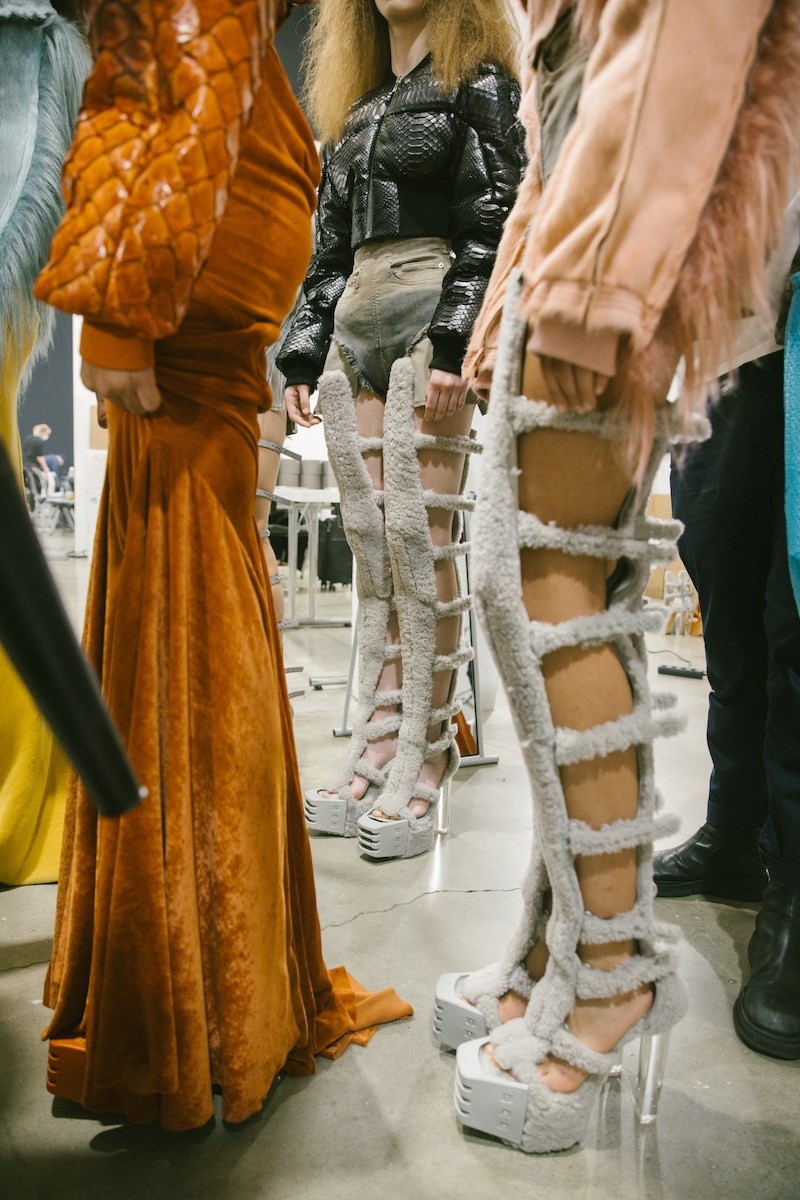
Some glittered with sequins, like 1920s femmes fatales. “Do you know who Theda Bara is?” he asked me after his Autumn/Winter 2022 menswear collection, where Bara’s outré 1917 turn as Cleopatra was obliquely referenced. Only Owens could cram a silent screen femme fatale into a men’s collection of butch sweatshirts and puffer jackets. Here, her mood infused parkas with tufts of fur, down jackets with the drama of an opera coat. A few jackets had raised shoulders, as if the models were tensing themselves; others had swollen padded boleros of snakeskin, so his women looked like cobras about to strike. Because, of course, sometimes you have to fight.
This was, however, a collection about beauty – as an antidote, perhaps, as a salve. But not as a distraction – despite the chiaroscuro of fog. “During times of heartbreak, beauty can be one of the ways to maintain faith,” Owens said. Amen.
